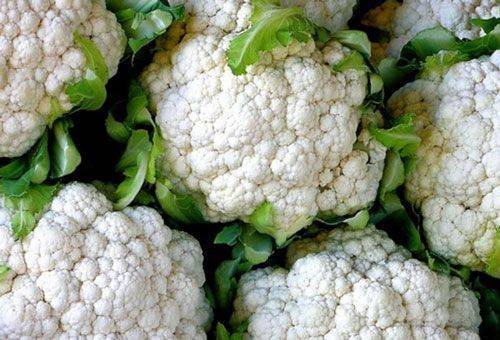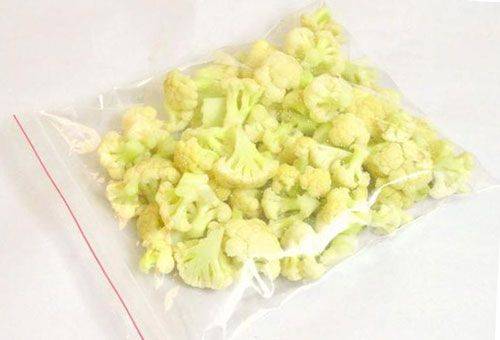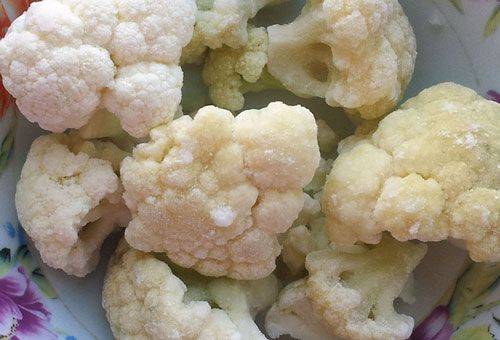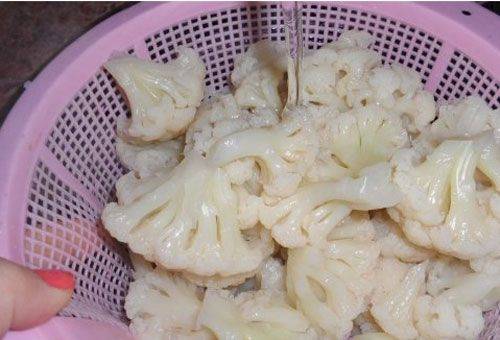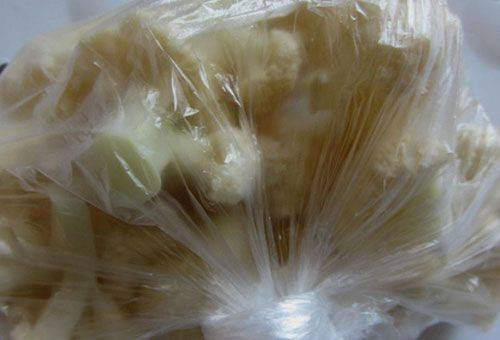How to save cauliflower at home?
Content:
Cauliflower is rich in vitamins, trace elements and carbohydrates, but all these components are found only in a seasonal product. If you know how to store cauliflower, you can use it throughout the year to prepare healthy and tasty dishes. It is worth considering that greenhouse analogues of the product are almost useless. They can not be used for feeding, they will not benefit people suffering from diabetes, atherosclerosis, diseases of the liver and gastrointestinal tract. Preparations should be done on time and carried out correctly. It is not enough to store the heads in the refrigerator, they need to be processed accordingly.
Preparing cauliflower for harvesting for the winter
For harvesting for the winter, it is best to use vegetables grown independently. In this case, it will be possible to control the harvesting process and qualitatively carry out the preparatory stages:
- Wet heads of cabbage are not subject to long storage, therefore harvesting is carried out in warm, dry weather. Overripe cabbage loses a significant part of the useful components, so it is better to collect it a little ahead of schedule and ripen on its own.
- Inflorescences need to be collected correctly - with leaves covering them, you can not leave them in the sun, from ultraviolet light, the cabbage will quickly turn yellow and become worthless. In some cases, the vegetable is dug up along with the root.
Tip: If you plan to store cabbage in the winter, do not feed the soil with nitrogen fertilizers. From such care, the vegetable deteriorates faster, even if all conditions are met.
- The fresh product needs to be slightly dried (it is possible in the fresh air, but under a thin cloth) and immediately begin bookmarks.
A correctly conducted preparatory stage ensures the preservation of the maximum amount of vitamins and minerals in the vegetable. This is especially important if you plan to make mashed potatoes for a child or diet foods.
How to store the product in the cellar or basement?
Despite the obvious tenderness of vegetable inflorescences, there are many ways to store cauliflower. If there is such an opportunity, then it is better to do this not in an apartment, but in a cold room with good ventilation and without signs of dampness. The best option for this would be a cellar or basement.
- At the head of cabbage we cut off the stump and most of the leaves. We put the inflorescences in boxes lined with foil. Between vegetables we leave gaps for ventilation. We cover the containers with a dark opaque film and expose in a room with a humidity of 85-90% and a temperature of 0 .. + 2ºС.
- We completely remove all the leaves and root, wrap the heads in polyethylene and put them in boxes.
- Wrap each fork with cling film, creating a vacuum and store in a suitable dark place.
- We free cabbage from the root from the lower leaves, and cover the inflorescences with the upper ones and bandage the head with a rope. The roots are placed in clean sand, packaged in boxes. Such a bed should be covered with an opaque film and installed in a room with a temperature of 4-6 ° C. This is the best way to ripen cabbage.
- You can hang the heads by the stumps, but the vegetables should not touch each other.
- The heads, completely cleaned of roots and leaves, are placed one at a time in nets, which we hang out under the ceiling.
- Wrap the peeled cabbage heads with a couple of leaves with newspapers and put them in plastic bags with holes.From time to time, packages need to be changed, especially if condensation has accumulated on them.
If there is no basement and cellar, you can use the balcony. Before storing cauliflower in an apartment, you need to make sure that the conditions described above can be created.
How can I store cauliflower in a refrigerator or freezer?
In an extreme case, cauliflower inflorescences can be stored in the refrigerator, however, they will take up a lot of space. The heads are cleaned of stumps and yellow leaves, wrapped in cling film and put in trays for vegetables. The option with a newspaper and a package is also suitable, but you will have to check the vegetables regularly, changing the wrapper.
In addition, you will have to constantly clean the heads of decaying leaves, cut off the darkened inflorescences, control the temperature in the refrigerator and regularly ventilate the room in which the unit is located.
Cauliflower can be frozen, but you need to do this correctly:
- We disassemble the cleaned and washed head into separate inflorescences, boil them for no more than five minutes.
- We discard the vegetables in a colander, wait until the water drains. Dry directly in a functional fixture or lay out on paper towels.
- We pack the product in plastic bags or containers, freeze in an accelerated mode. From time to time, it is recommended to shake the container so that the elements do not stick together in one large piece. It is allowed to pack vegetables in portions.
You can freeze fresh cabbage, in this case, the stage of cooking products is excluded. But with this approach, the risk of spoiling the vegetable is much higher, and its taste after defrosting will be slightly different from the usual one. Repeated freezing of cabbage is unacceptable.
During storage, you need to monitor the quality of the products in the bookmark, throwing out damaged heads as necessary or cutting out rotted inflorescences. Items with traces of damage should be stored separately from the rest and used first.

